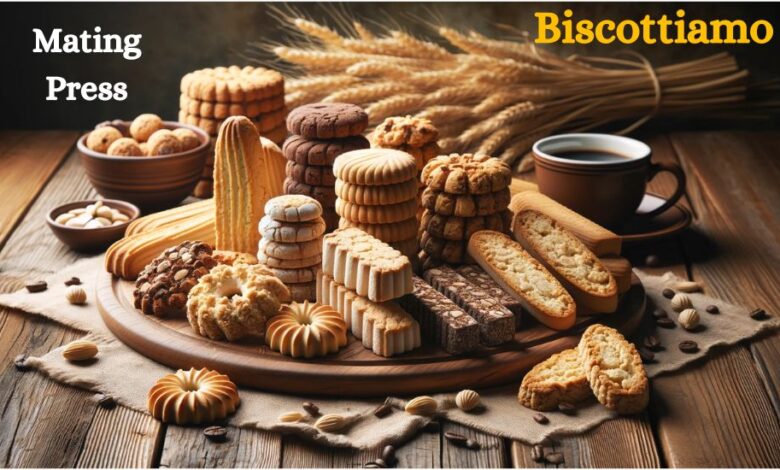Italy’s rich culinary landscape offers an array of flavors and traditions, from its renowned pasta dishes to its delightful desserts. Among these, biscotti hold a special place, combining history, culture, and taste in a single bite. “Biscottiamo,” a term derived from the Italian word for cookies, signifies the celebration and enjoyment of these crunchy delights. This article delves into the world of biscotti, exploring their origins, variations, and enduring appeal.
The Origins of Biscotti
Biscotti, also known as cantucci, trace their origins to the Roman era. The word “biscotti” comes from the Latin “bis coctus,” meaning twice-baked. This baking method, which involves baking the dough once, slicing it into pieces, and then baking it again, results in the biscotti’s characteristic crisp texture. Initially, biscotti were practical foods for Roman soldiers and travelers due to their long shelf life and portability.
Regional Variations
Italy’s diverse regions each offer unique interpretations of biscotti, reflecting local ingredients and traditions. In Tuscany, where biscotti are most famously associated, the classic almond biscotti reign supreme. These biscotti are often enjoyed with a glass of Vin Santo, a sweet dessert wine, creating a harmonious pairing that enhances the flavors of both.
In the Veneto region, baicoli are a beloved variation. Named after a type of fish due to their shape, baicoli are lighter and less sweet than their Tuscan counterparts. They are traditionally served with coffee or zabaglione, a rich egg-based dessert. Meanwhile, in Sicily, biscotti di mandorla showcase the island’s abundant almond crops, offering a chewy and aromatic alternative to the crunchier northern versions.
Modern Takes on Traditional Recipes
As culinary trends evolve, so do biscotti recipes. Today, biscotti come in a plethora of flavors and styles, ranging from classic almond and anise to contemporary variations like chocolate, cranberry, and pistachio. Bakers around the world experiment with different ingredients, adding spices, dried fruits, and even savory elements like cheese and herbs.
One popular modern twist is the chocolate-dipped biscotti, which adds a layer of indulgence to the traditional recipe. These biscotti are typically half-dipped in dark, milk, or white chocolate, creating a delightful contrast between the rich, smooth chocolate and the crunchy cookie.
The Art of Biscotti Baking
Baking biscotti is an art that requires precision and patience. The dough, often a simple mixture of flour, sugar, eggs, and flavorings, must be carefully shaped into logs and baked until firm. After the initial bake, the logs are sliced diagonally while still warm, then returned to the oven for the second bake, which gives biscotti their signature crunch.
Achieving the perfect texture is key: biscotti should be crisp but not overly hard, allowing them to soften slightly when dunked in coffee, tea, or wine. This twice-baked technique not only ensures a long shelf life but also intensifies the flavors, making each bite a delightful experience.
Biscotti in Modern Culture
Biscotti have transcended their Italian origins to become a beloved treat worldwide. Their versatility and long shelf life make them a popular choice for gifting, and they are often found in gourmet food baskets and holiday packages. Many coffee shops and bakeries feature biscotti as a staple offering, catering to customers who appreciate a satisfying and not-too-sweet accompaniment to their beverages.
In the age of social media, biscotti have also found a new platform. Food bloggers and influencers share their creative biscotti recipes and visually appealing presentations, inspiring home bakers to try their hand at making these delightful cookies.
Conclusion
“Biscottiamo” encapsulates the essence of enjoying and celebrating biscotti. These twice-baked cookies, with their rich history and diverse regional variations, continue to captivate taste buds around the world. Whether enjoyed with a glass of wine, a cup of coffee, or simply on their own, biscotti offer a delightful blend of tradition, flavor, and texture that is sure to endure for generations to come. So, the next time you savor a biscotto, take a moment to appreciate the centuries of culinary heritage baked into each bite.
